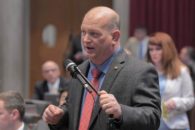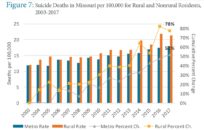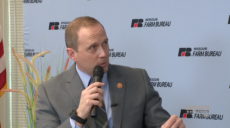JEFFERSON CITY, Mo. — In his first presentation to the oversight committee as director of Missouri’s Medicaid program, Director Todd Richardson focused on the findings of a recently released independent study.
The MO HealthNet Oversight Committee held its quarterly meeting on Thursday, with a full agenda that included budget, legislative, and enrollment updates. The previous quarterly meeting was held on the same day that Richardson stepped into the role of Director of MO HealthNet — November 1, 2018.
The recently released Rapid Response Report, which outlined differently ways the state Medicaid program could save up to $1 billion annually, was a topic that interested the members of the committee.
“It is important to keep in mind what this report is and what it is not. And it is important to keep in mind what the state sought when they commissioned this report,” Richardson told the MO HealthNet Oversight Committee. “This report was never intended to be, nor will it be, an exact road map of what we are going to do within the program.”
The director called the report a good starting point to have the discussion of what the MO HealthNet program looks like moving forward.
“We recognize that if we are going to do this job well, if we are going to make meaningful improvement in the program, we are going to have to have a lot of engagement with our partners across the state,” said Richardson.
The one thing in the report that he really highlighted was the projected cost of the program moving forward.
After an analysis of historical trends the report indicated the sustainability of Missouri’s Medicaid program is under pressure. In FY 2009, 17 percent of general revenue went to the program while in FY 2018, 24 percent of general revenue was allocated for MO HealthNet. The report projected the spending would grow to 26 percent of general revenue in FY 2023.
To add context to those figures, Richardson said that every percentage point of general revenue is approximately $100 million. The delta between current levels and the levels if nothing changes is almost $600 million — if the economy takes a downtown.
“If we end up in a scenario where we end up in that kind of gap, the range of options available to the General Assembly to balance the budget gets really, really narrow. The suit of options as it relates to the MO HealthNet program are a litany of really bad choices,” said Richardson. “I don’t want us to get to a point where we are faced with those very stark choices.”
Several members of the committee had questions about the report and the methodology used in the projections.
Specifically, Rep. Cora Faith Walker was curious how the team came up with the cost projections as they related to general revenue funds and the program itself. Dr. Bridget McCandless wanted to know if MO HealthNet’s percentage of general revenue would be larger because with the passage of tax cuts, “the pie would be smaller.”
Richardson noted that it would take some time to look into some of the questions asked, inviting members to look over the report and reach out with any questions they had after the meeting. The committee plans on diving more in-depth to the report at their April 2nd meeting.
“We always have to keep front and center what the primary mission of the program is and that is to care for Missouri’s most vulnerable. I think we can do a better job of that then we do today,” said Richardson.
It will be an ongoing process, he noted. With the report to use as a jumping off point, they can start engaging with stakeholders to discussion what the program looks like moving forward.
Richardson didn’t have a timeline moving forward, saying that it depends on the issue. Part of the implementation timeline will depend on what avenue they need to take. Some changes will be able to be done in the department while some will be through the budget and others through statutory changes.
“Our goal is to build a best-in-class Medicaid system that cares for Missouri’s most vulnerable, and does so in a way that is financially sustainable for the taxpayers of Missouri,” said Richardson.

Alisha Shurr was a reporter for The Missouri Times and The Missouri Times Magazine. She joined The Missouri Times in January 2018 after working as a copy editor for her hometown newspaper in Southern Oregon. Alisha is a graduate of Kansas State University.


















